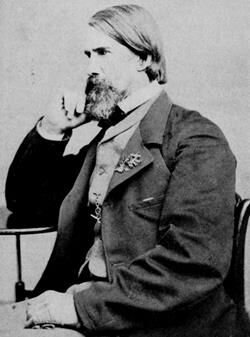
John A. Warder
January 19, 1812 - July 14, 1883John Aston Warder was born near Philadelphia, the eldest son to Quaker parents, Jeremiah and Ann Aston Warder. Warder spent a great deal of time outdoors in the woodlands near his home. In 1836, he graduated from the Jefferson Medicine College in Philadelphia to pursue a medical career. He moved to Cincinnati, Ohio where he established his medical practice for 20 years. In this time, he remained actively interested in the outdoors and natural world.
During his medical career, he became involved in various organizations, including both of the Cincinnati and Ohio Horticultural Societies, the Ohio State Board of Agriculture, The Cincinnati Society of Natural History, and the Western Academy of Natural Sciences. Warder had a deep interest in gardening and landscape design, and called public attention to the landscape beautification of cemeteries and parks. He quit his medical practice in 1855 and moved to the rural town of North Bend, Ohio. He was able to fully immerse himself in gardening and he began writing extensively on horticulture.
In the 1860s, Warder’s interests shifted towards forestry, which led him to be appointed the US Commissioner to the International Exhibition at the 1873 World’s Fair in Vienna. For this exhibition, he wrote the official report on forests and forestry, which described the forestry exhibits of each country, gave detailed forest data, and provided European forestry knowledge that was available to Americans.
In 1858, he wrote Hedges and Evergreens, which proposed planting belts of trees on the western plains of the US to protect soil from erosion and to provide shelter from wind. In 1875, Warder called a meeting at the Grand Pacific Hotel in Chicago for those interested in conservation and forest planting, and on September 10, the American Forestry Association (AFA) was born. Warder was chosen to be the group’s first president. The formation of the AFA was significant in forestry history because it was formed prior to the existence of national and state forests, forest education programs and national forest policies. It shaped the advancement of forest management and conservation into the 20th century.
Warder remained president of the AFA until 1882, when the group merged with the American Forestry Congress, known today as American Forests (https://www.americanforests.org/). In 1883, he fell ill and died, and was buried in Cincinnati’s Spring Grove Cemetery, which he helped in designing and landscaping.
